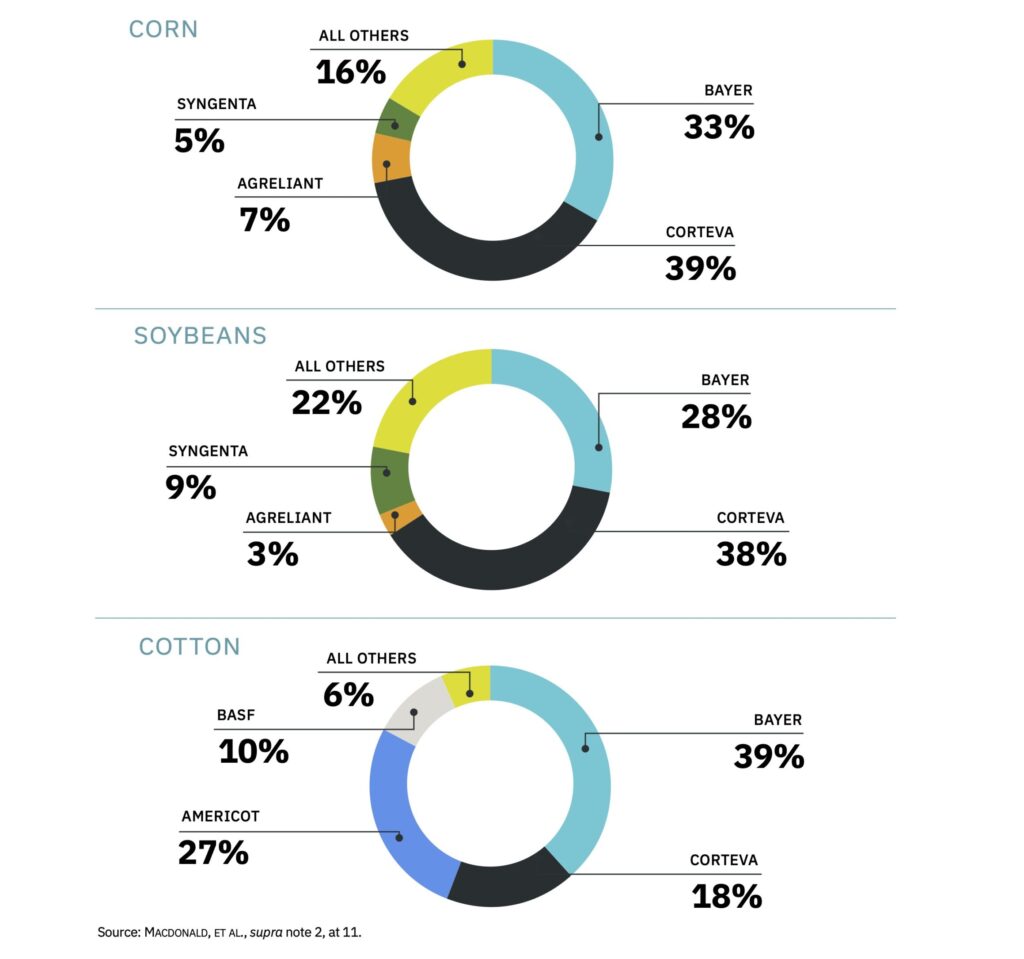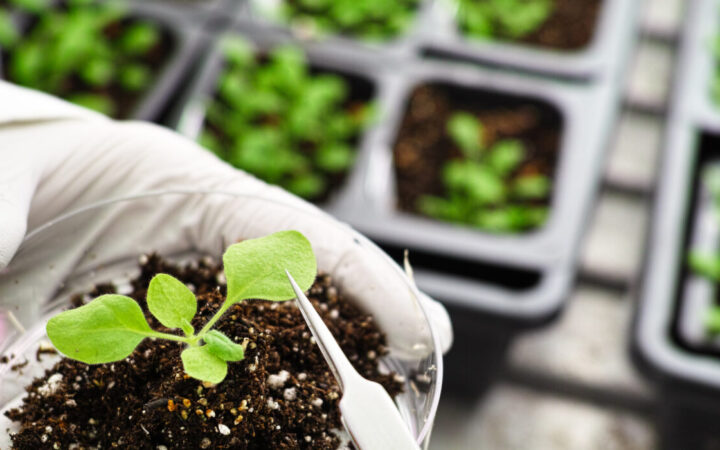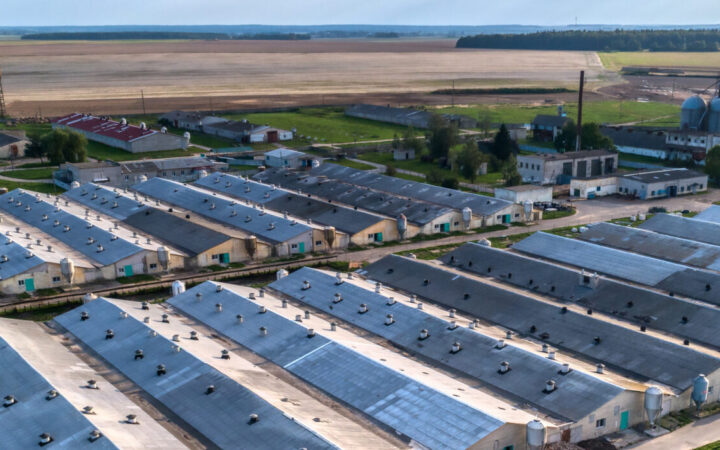This guide explains the fine print in technology use agreements—contracts that farmers sign with seed companies to purchase and use their seeds according to the contract terms. This guide also compares technology use agreements among the three largest seed companies in the US.
Introduction
A thriving agricultural sector depends on fair competition, including access to diverse seed options at fair prices. A 2023 report by the United States Department of Agriculture (USDA), More and Better Choices for Farmers, adresses the impacts of consolidation in the seed industry. Farmers, independent seed companies, and plant breeders have voiced concerns about concentrated market power in the seed industry leading to unfair contracts and a decline in competition.
The seed industry has consolidated significantly over the past few decades. Prior to the 1970s, public plant breeding was responsible for developing many new crop varieties. Farmers could save seed year to year. Under the 1970 Plant Variety Protection Act (PVPA), some new plant varieties became subject to intellectual property protections. The Act contains exceptions to allow seed- saving, research, and breeding. However, beginning with a 1980 Supreme Court decision and affirmed through later cases, plants and plant components became recognized as eligible subject matter for utility patents. These types of patents grant much more expansive rights to the patent holder. This change has made investment in crop development more lucrative for private companies, especially for genetically modified crops. The result has been seed industry consolidation, resulting in fewer seed options for farmers, sold by fewer companies. Today, the three largest companies in the US are Bayer, Corteva, and Syngenta (owned by ChemChina).
To secure their intellectual property, large seed companies require farmers to sign a contract before accessing their seeds. This is particularly true for commodity crops, including corn, soybeans, and cotton. As this guide will show, the contract terms available to farmers barely differ among the largest seed companies. Due to the dominance of a few suppliers in the seed market, commodity farmers have few options but to accept these contracts’ restrictive terms.
Defining Terms: Seed Contract and Technology Use Agreement
There is no standard name for the contracts farmers sign to access seeds, but companies often call them technology use agreements or technology stewardship agreements. In this guide we will refer to them as technology use agreements or seed contracts, using these terms interchangeably. In some contexts, a seed contract may refer to a contract to grow seed for companies; however, for the purposes of this guide, we use the term to refer to a technology use agreement for a farmer to access seeds to grow crops.
What Does This Guide Do?
This guide has two primary goals: to provide transparency and aid understanding of the fine print in technology use agreements for commodity seeds used by the largest seed companies, and to offer a larger context for how consolidation in the seed industry affects farmers in the United States. Part II of this guide introduces important legal context for technology use agreements. Part III analyzes contracts between the three largest seed companies—Bayer, Corteva, and Syngenta—and individual growers of commodity crops. By understanding their legal obligations, commodity growers can better protect themselves from inadvertently breaching their contracts and jeopardizing their relationships with seed companies.
Concentration in the Seed Industry
Four companies (Bayer, Corteva, ChemChina/Syngenta, Limagrain) account for over 50% of global commercial seed sales. In the United States, four companies (Corteva, Bayer, AgReliant, Syngenta) control 80% of corn seed sales and 75% of soybean seed sales.
The graphic below shows market concentration in seed sales for three commodity crops.
Acknowledgements
This guide was produced by the Center for Agriculture and Food Systems (CAFS) at Vermont Law and Graduate School. The report was written in partnership with Kristina (Kiki) Hubbard and Paulina Jenney, Department of Plant and Agroecosystem Sciences, University of Wisconsin–Madison, who served as thought partners, editors, and reviewers.
We thank the following people for reviewing this report: Julie Dawson, University of Wisconsin–Madison; Claire Kelloway, Open Markets Institute; Lindsay Kuehn, Farmers’ Legal Action Group; and Justin Stofferahn, Minnesota Farmers Union. Thanks also to the farmers and seed growers who spoke to us about their work and are remaining anonymous. Their generosity with their time and expertise greatly increased our understanding of the practices and dynamics at issue in this guide. The reviewers and interviewees did not review the final document and do not necessarily agree with the guide’s arguments and recommendations but provided enormously thoughtful guidance and feedback on its content.
This guide would not have been possible without the tremendous editing, production, and communications support of the Center for Agriculture and Food Systems, including Laurie Beyranevand, Director; Lindsey Cole, Program Manager and Research Fellow; Lihlani Nelson, Deputy Director and Senior Researcher; and Austin Price, Communications Manager.
This guide was made possible with support from the National Agricultural Library, US Department of Agriculture.







